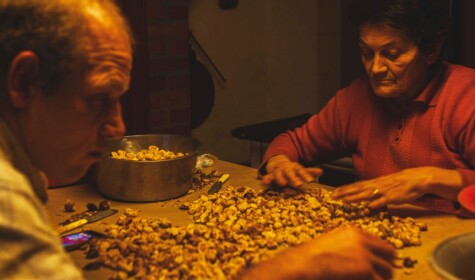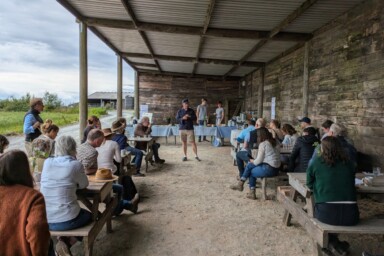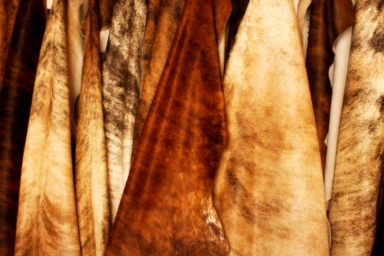Max Jones shares some of the fascinating insights from his visits to producers in the Piedmont region of Italy and other rural communities in Europe. Max considers how stifling hygiene regulations are propagating a sense of shame amongst some small-scale producers, promoting the misconception that traditionally produced foods are ‘unclean’, a narrative that risks further eroding local food cultures.
The best job I ever had was working for a cheesemonger in London, in the arches beneath the railway in Bermondsey. I was lucky enough to work with some of the finest farmhouse cheeses from France and Switzerland. Working so closely with cheeses similar to those I had grown up with in the mountains of Piedmont in Italy felt natural, yet I always remember finding them a little out of place amongst our clean whites and ‘cheese-contact’ knives and the tools that we washed down religiously with Topax-19, rough stuff that made your eyes water and your throat sore when you breathed it in as you scrubbed. I went along with it as part of the high standard of professionalism in the company towards hygiene. I became conditioned to it in the way that only a cheesemonger really knows, developing over the years an irrationally visceral aversion to anything – knife or cheese-wire – that may have come into contact with something that may have come into contact with the floor. If in doubt, grab the Topax-19, (cough).
On a personal level, I found there was something about this hyper-cleanliness that felt somehow at odds with the product itself. My increased visits to producers in remote places, made me feel most connected to cheeses made by real people who still used ancient recipes in tiny chalets next to alpine glaciers, wearing the same clothes with which they worked the land. The food was often only made from the milk of a handful of animals, drawing on the traditions of transforming the landscape into food, where the presence of coloured plastic tubs of chemicals was anachronistic. They had no place in this natural context.
These wheels of cheese sang to me and when I ate them, I felt I connected to an old world still held by their very human production. And sitting on the shelves of the pristine maturing rooms in London, away from their earthy cellars and mountain backdrops, they were a kind of anomaly.
Valuing traditional foods
It was this palpable contrast that highlighted to me, our disconnection from these traditional foods, which eventually led me to leave London. I was attracted to the intensely human stories and skills involved with producing food in a given landscape, that were at odds with the sterile environments of some of the larger, stainless steel, dairies I had been to, albeit still considered ‘artisanal’.
I felt drawn to time-honoured authenticity, excited to observe lived wisdom that was still connected to the past. Like the time I joined the producers of Salers de Buron, a huge cheese from the Auvergne whose size reflects its cultural clout. The recipe must be a few thousand years old, and it is made in the same wooden barrel that is taken into the field, and into which the milk is poured. Marcel and his two other herders have no need – or even concept of – having to add starter cultures; the wood of the barrel itself is home to a unique family of cultures, sustained over its long heritage which exists in no small part because the barrel is never washed.
Salers is one of the most extraordinary cheeses I have eaten, utterly unique in its complexity and inimitable ‘wild’ character, and it far predates any notions of health and safety as we think of it now. It actually represents the apex of ancient and established knowledge in making food safe in the first place. It is still done through positive microbial nurturing, acidification and the removal of free water with salt and pressure. I remember asking Marcel if anyone was ever sick from eating Salers in his memory.
“Non” was his response.
What are we losing?
Sitting down to lunch in the small stone chalet after milking, Marcel pulled out a large loaf of bread from the bench he was sitting on and casually brushed away the blue penicillium in a cloud of Atlantic green spores that billowed through the small room as he began to slice the bread with a rust-tinged opinel knife. On the table in front of me was a clip-top glass jar, and inside, saucisson sec and a mysterious, brownish clump of something furry. When Marcel unclipped the jar, it opened with a pop – the sausage inside was delicious. When we finished the sausage, he grabbed the little dirty tuft and lit it with a match, dropping it back in the jar, and closed the lid. I realised then that it was a cotton-wool ball; it burned until all the oxygen was consumed as the flame died. It had made its own vacuum in the jar, hugely increasing the longevity of the meat and inhibiting the negative effects of oxidation.
Seeing these methods made me realise the concept of refrigeration, DVIs (Direct to Vat Inoculation, i.e. freeze-dried starter cultures) and chemical sterilisation are all incredibly recent, shaking the foundations of what I had been taught back in London. The overwhelming sense of lived human knowledge and expert heritage that these men were casually propagating on their remote mountaintop, and seeing it transformed in this natural setting by real people, brings to mind the fact that in its natural existence, milk is never meant to be refrigerated and is most certainly never sterilised. Ultimately, its destiny is to become cheese.










